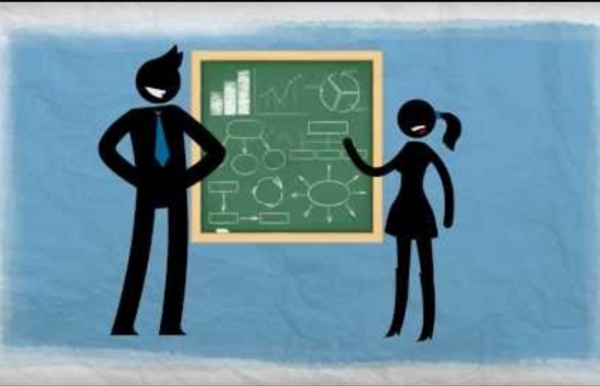



http://www.youtube.com/watch?v=ePOnn0H9GMY
Related: Teoría y conceptos FC • ssantibanez_2016 • Flipped ClassroomIPad = Flipped Classroom Made Easy Yes, the Flipped Classroom (Video lessons watched before class time) is a fashionable topic but whilst there’s still chalk-and-talk together with standardised testing I feel I must continue to push it. And no, it’s not just chalk-and-talk in disguise. It creates a whole new learning environment for the student. I haven’t taught a whole class for 6 months! All my teaching is now one-to-one and not surprisingly, my grades are soaring. Your access to this site has been limited Your access to this service has been temporarily limited. Please try again in a few minutes. (HTTP response code 503) How to flip the classroom Flipping is easy – and with a little thought and planning, teachers can use the flipped model to create engaging learning experiences for their students. This section covers the nuts and bolts of flipping – from creating videos, to introducing the flipped concept, to practical ideas for using class time differently. What are teachers saying? As an English teacher, I have several teaching concepts going at once, so flipping works well for me. I may have kids watch a lesson at home to learn about literary devices in a book we are reading in class.
Scaling Flipped Learning Part 1: Technology Strategy – Flipped Learning Simplified A 2014 study indicates that 46% of U.S. principals expect that new teachers to the profession should already know how to flip a class upon graduation from a teacher training program. There is also a growing body of research which demonstrates that flipped learning is showing significant growth in student achievement, satisfaction, and teacher satisfaction. As schools begin to implement the model, what kinds and type of support should school leaders provide? This past year I worked with a group of teachers from a variety of schools which was implementing flipped learning into their classes. I was with them three to four times during the year and got to know their successes and challenges.
Scaling Flipped Learning Part 2: Shifting Pedagogy – Flipped Learning Simplified Individual teachers across the world who are flipping their classes, are often working in isolation and small pockets. However, as the movement has grown, there is an increasing need to think systemically about how to scale flipped learning. I believe three systems need to change for flipped learning to flourish on a large scale in a school or district: technological systems, pedagogical systems, and evaluation methodologies. In part one of this series, I discussed how technological systems need to be integrated, workflows need to be simplified, and technology infrastructure needs to support flipped learning. The focus of this post will be to examine how pedagogical systems need to adapt for flipped learning to thrive on a large scale. Educational researchers have been studying learning for a very long time.
Scaling Flipped Learning Part 3: Teacher Evaluation – Flipped Learning Simplified As more and more schools adopt flipped learning on a larger scale, there is a need to think systemically about evaluation systems. This is the third in a series on how to scale flipped learning. In the first post I discussed technological systems, in the second I discussed pedagogical systems, and in this post, I will explore how evaluation systems need to change when flipped learning is scaled. During my twenty-four years as a classroom teacher, I was evaluated many times by administrators. The vast majority of these evaluations consisted of the principal sitting in my class and watching me “teach.” Scaling Flipped Learning Part 4: Learning Spaces – Flipped Learning Simplified “We don’t just want to flip classes; we want to flip schools.” Ignacio Romero, MT Groupo, Spain This sentiment expressed by Ignacio resounds with me. One of the greatest strengths of flipped learning has been its grassroots nature. It started with teachers trying to do what was best for their students and has grown into a worldwide movement.
Scaling flipped learning Part 5: Student Buy-In – Flipped Learning Simplified As flipped learning continues to grow, there is a greater need for flipped learning to scale beyond individual teachers flipping, to larger roll-outs with systemic planning and leadership. This post is the 5th out of 7 in a series. The previous posts were:• Part 1: Scaling Flipped Learning: Technological Needs at Scale• Part 2: Scaling Flipped Learning: Pedagogical Needs at Scale• Part 3: Scaling Flipped Learning: Changing Evaluation Systems• Part 4: Scaling Flipped Learning: Learning Spaces • Part 5: Scaling Flipped Learning: Student Buy-In • Part 6: Scaling Flipped Learning: Parent Buy-In (Not yet published) • Part 7: Scaling Flipped Learning: Teacher Buy-In (Not yet published)
Scaling Flipped Learning Part 6: Parent Buy-In – Flipped Learning Simplified As flipped learning continues to grow, there is a greater need for flipped learning to scale beyond individual teachers flipping, to larger roll-outs with systemic planning and leadership. This post is the 6th out of 7 in a series. The previous posts were: Sometimes students don’t always communicate with their parent’s accurate information about what is happening in school.
Scaling Flipped Learning Part 7: Teacher Buy-In – Flipped Learning Simplified Scaling Flipped Learning Part 7: Teacher Buy-In As flipped learning continues to grow, there is a greater need for flipped learning to scale beyond individual teachers flipping, to larger roll-outs with systemic planning and leadership. This post is the 7th and final post. The previous posts were: Getting teachers convinced that they should embrace flipped learning is the most important step.